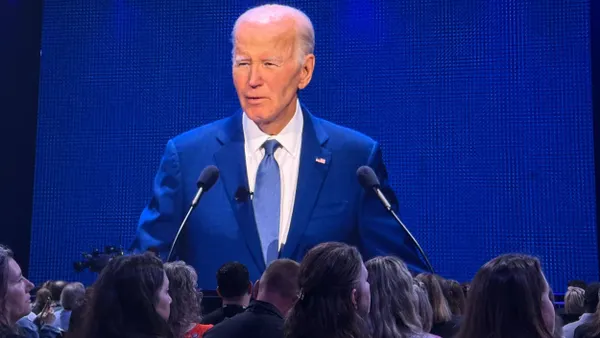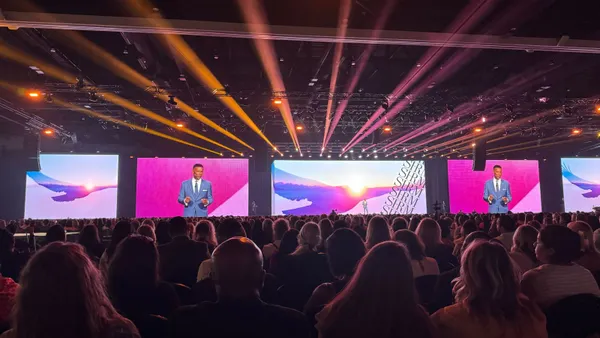Today’s workers expect their employers to deliver the right tools and technology to help make work easier and more meaningful—but “right” can mean different things to different people. In order to harness the power of the digital workforce, organizations need to actively identify and solve for the needs of their workers across functions, locations, and teams, and treat employees as unique individuals. By doing so, companies can remove barriers to productivity, teamwork, and creativity, and scale and innovate faster than ever.
A new landscape of work
Technology has transformed the way we work, giving significant advantages to forward-thinking companies that embrace change and uncertainty. Successful organizations are adapting to the new world of work with remote, contract, or freelance workers, customizable tools, and flexible business models—all of which are revolutionizing how great work gets done. But how that work gets done differs from person to person, team to team.
Today’s workforce
Thanks to the current multi-generational workforce, organizations can harness diverse perspectives, which has proven highly effective in reaching—and often exceeding—performance objectives, specifically as part of a team. Older generations bring a wealth of soft skills, leadership, and experiences to draw upon, whereas their younger counterparts add intuitive learning and digital fluency.
In today's digital workforce, top talent can choose to engage in work arrangements that best suit their needs. Organizations that incorporate adaptable work engagements can attract and retain the right people, and help solve the talent acquisition challenge.
So, how can organizations create an environment that champions the strengths of a diverse, multigenerational, digital workforce? The diverse workforce of today has one thing in common—each person relies on teams of other workers to get work done. In fact, the ADP Research Institute found in its 2019 Global Study of Engagement that 83% of survey respondents indicated they were on at least one team, and 64% were on more than one team¹. Arming teams with a human capital management (HCM) solution that can unleash the collaborative creativity of each of their employees can help teams flourish.
Make personalization a priority
As the workplace continues to evolve, so does the make-up of organizations. Gone are the days of strictly full-time employees, with part-time and job sharing arrangements more common than ever. Additionally, contractors and freelancers are increasingly common on virtual teams, as they value flexibility and diversity of projects. In exchange, businesses remain productive and can tap into talent across geography and generations, through the use of collaboration technology that facilitates remote and virtual teamwork and work arrangements.
Create and embrace a collaborative environment
Cross-functional, dynamic team environments have been shown to increase productivity and performance: fifty-three percent of Deloitte survey respondents said they saw a “significant improvement in performance” from the transition to a team/network-based organization². These working relationships, which blur the lines of a traditional, hierarchical organizational structure, allow employees to solve challenges that more conventional working styles could not.
As HR leaders look to provide business value outside of solely managing people transactions, championing dynamic teams and cross-functional collaboration is a step in the right direction. To make this a reality, HR needs to provide team leaders with tools that can support cross-functional teamwork and help teams stay connected. Ultimately this means empowering team leaders with the ability to track, measure and improve the collaboration, engagement, performance & retention of their teams, while learning how to create more teams like their best teams.
Extend your global reach
In the digital world, the barriers for international growth and tapping global talent pools are lowering. Organizations can now engage and create collaborative global work environments, tapping into the best and brightest without the hindrance of geographical constraints—but providing HCM tools and resources that meet the needs of unique locations can be challenging. Using an HCM solution that’s designed to help support and empower global teams (with tools like weekly check-ins and engagement pulse surveys) can help organizations bring people with varied work experience together and better leverage functional expertise around the world.
Put adaptability and innovation at the forefront
A digital, global, and engaged workforce that is connected through technology lays the foundation for adaptability and innovation. Enabling a diverse workforce to collaborate and share insights in a digital model will unlock the ability to execute with an adaptable approach and accelerate innovation.
To learn more about creating personalized and adaptable work experiences for your workforce, visit FlowOfWork.adp.com.
1. ADP Research Institute, 2019 Global Study of Engagement
2. Deloitte, 2019 Deloitte Human Capital Trends










